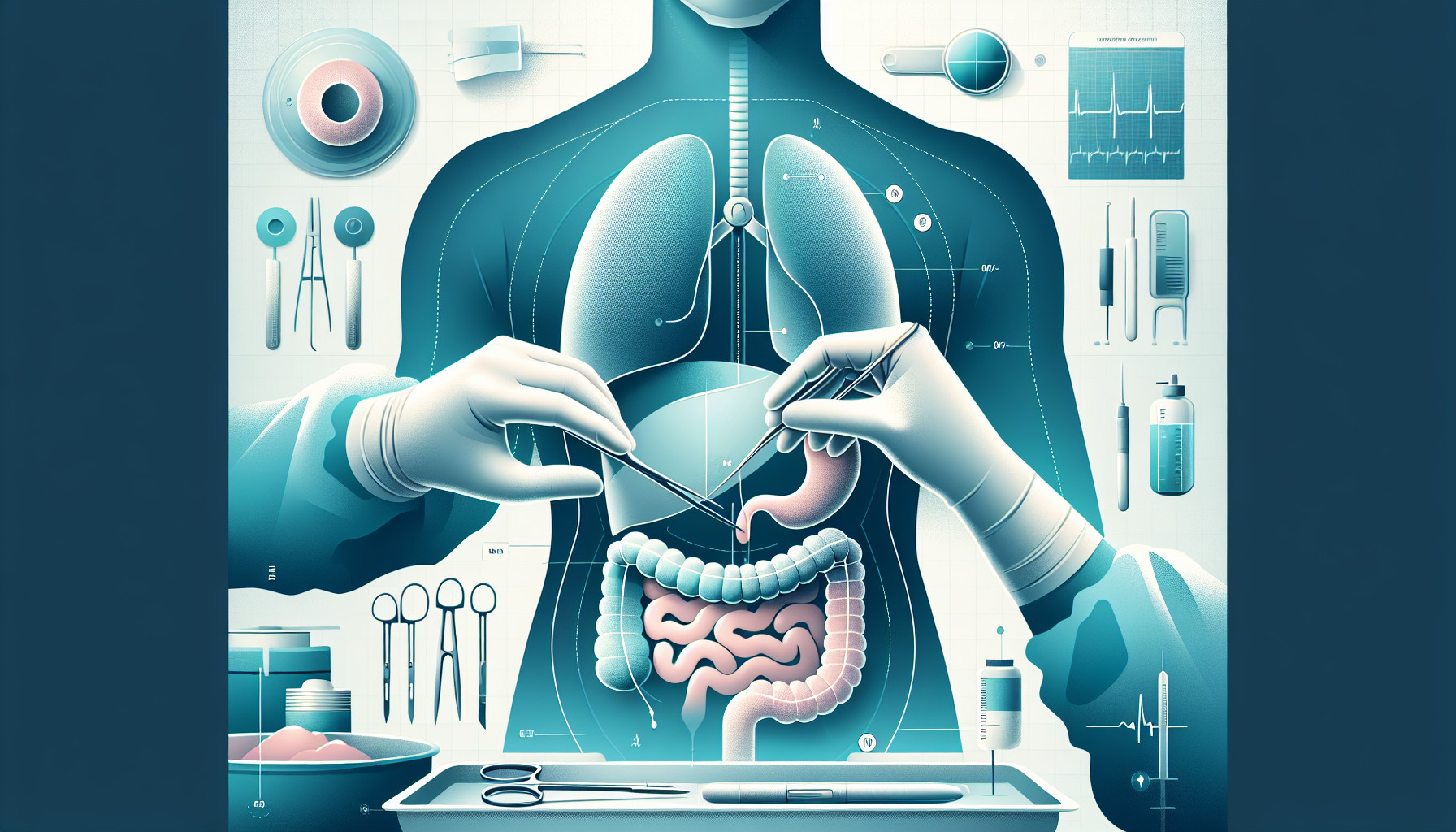Our Summary
This research paper is about a study that examined the use of a tool called the Endoluminal functional lumen imaging probe (EndoFLIP) during surgery to repair hiatal hernias. Hiatal hernias occur when part of the stomach bulges up through the diaphragm into the chest cavity.
The researchers used the EndoFLIP to measure something called the distensibility index (DI), both at the beginning and end of the surgery. The DI measures how much the tissues can stretch and expand. They wanted to see if the initial and final DI values could predict how well patients would recover from the surgery.
The study looked at data from 163 patients who had the surgery between 2017 and 2019. They found that the initial DI value was related to the final DI value, but it didn’t predict how much the patients’ symptoms improved. However, if the final DI value stayed above a certain level, most patients did not need further treatment for difficulty swallowing (dysphagia).
In conclusion, the EndoFLIP tool can provide useful data during surgery and help prevent severe dysphagia after hiatal hernia repair.
FAQs
- What is the Endoluminal functional lumen imaging probe (EndoFLIP) and how is it used during hiatal hernia repair surgery?
- What does the distensibility index (DI) measure and how does it relate to patient recovery after surgery?
- Based on the study, how does the EndoFLIP tool help in the prevention of severe dysphagia after hiatal hernia repair?
Doctor’s Tip
A helpful tip a doctor might give a patient about hiatal hernia repair is to follow any post-operative instructions carefully, including maintaining a soft diet and avoiding heavy lifting or strenuous activity for a certain period of time. This will help ensure proper healing and minimize the risk of complications. Additionally, it’s important to attend follow-up appointments with your healthcare provider to monitor your recovery progress and address any concerns or symptoms that may arise.
Suitable For
Patients who are typically recommended for hiatal hernia repair include those who have symptoms such as heartburn, chest pain, difficulty swallowing, and regurgitation. Additionally, patients with a large hiatal hernia, recurrent symptoms despite medical treatment, or complications such as Barrett’s esophagus or strictures may also be candidates for surgery. The use of tools like the EndoFLIP during surgery can help surgeons assess the tissues’ ability to stretch and predict post-operative outcomes, ultimately leading to better treatment decisions for patients with hiatal hernias.
Timeline
Before the hiatal hernia repair surgery, patients may experience symptoms such as heartburn, chest pain, difficulty swallowing, regurgitation, and acid reflux. They may undergo various tests such as endoscopy, barium swallow, and pH monitoring to confirm the diagnosis of a hiatal hernia.
After the surgery, patients typically experience some pain and discomfort at the incision site, which can be managed with pain medications. They may also be advised to follow a special diet to prevent straining or irritation of the surgical site. In the following weeks and months, patients should gradually resume normal activities and may undergo follow-up appointments with their surgeon to monitor their recovery.
Overall, patients who undergo hiatal hernia repair surgery using the EndoFLIP tool may experience improved symptoms, particularly in relation to swallowing difficulties. The use of this tool during surgery can help predict and prevent postoperative complications such as severe dysphagia.
What to Ask Your Doctor
Some questions a patient should ask their doctor about hiatal hernia repair include:
- What is a hiatal hernia and how does it affect me?
- What are the different treatment options for a hiatal hernia, and why do you recommend surgery in my case?
- What is the Endoluminal functional lumen imaging probe (EndoFLIP) and how will it be used during my surgery?
- How will the distensibility index (DI) measured by the EndoFLIP affect my recovery and potential symptoms post-surgery?
- What are the potential risks and complications associated with hiatal hernia repair surgery?
- What is the expected recovery time after the surgery, and what can I do to help facilitate a smooth recovery?
- Are there any dietary or lifestyle changes I should make before or after the surgery to improve my outcomes?
- How will I be monitored post-surgery to ensure that I am healing properly?
- What is the likelihood of experiencing dysphagia after the surgery, and how can it be managed if it occurs?
- Are there any specific questions or concerns I should discuss with you before proceeding with the surgery?
Reference
Authors: Nwokedi U, Nguyen DT, Meisenbach LM, Chihara R, Chan EY, Graviss EA, Kim MP. Journal: Surg Endosc. 2021 Jul;35(7):3840-3849. doi: 10.1007/s00464-020-07788-x. Epub 2020 Jul 14. PMID: 32661713
